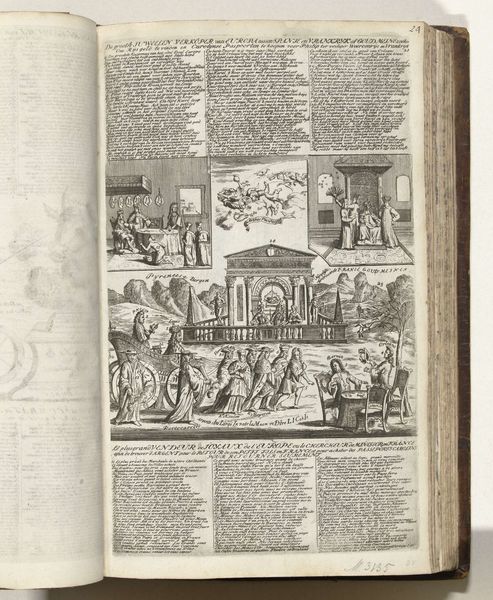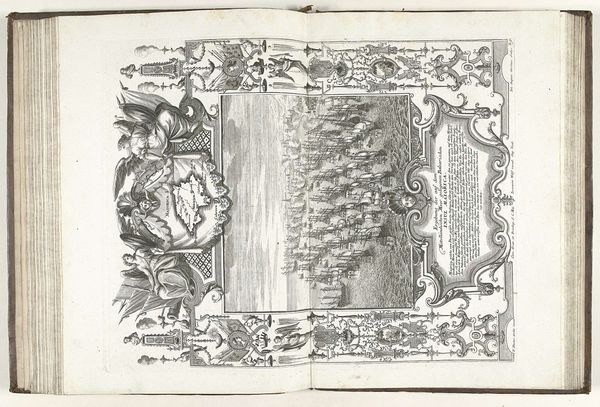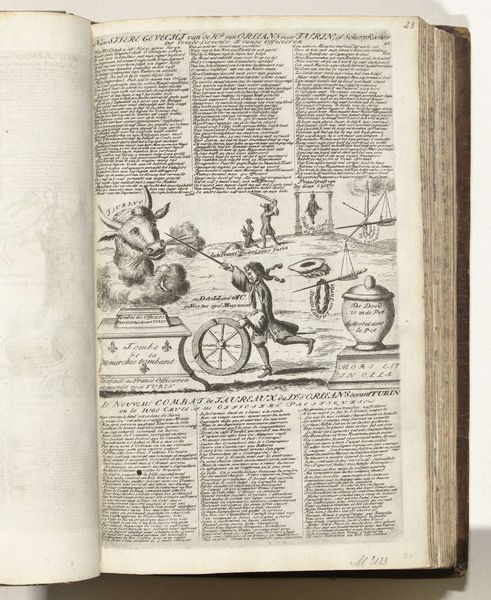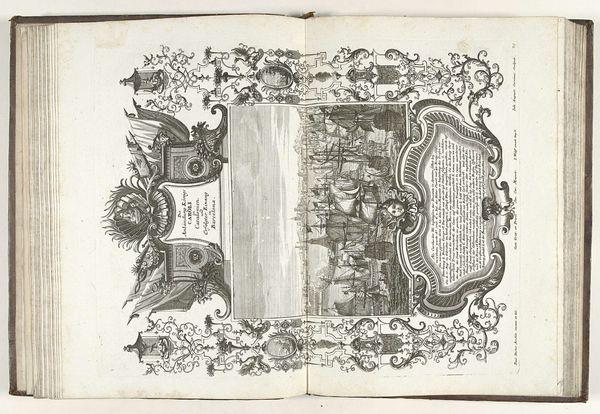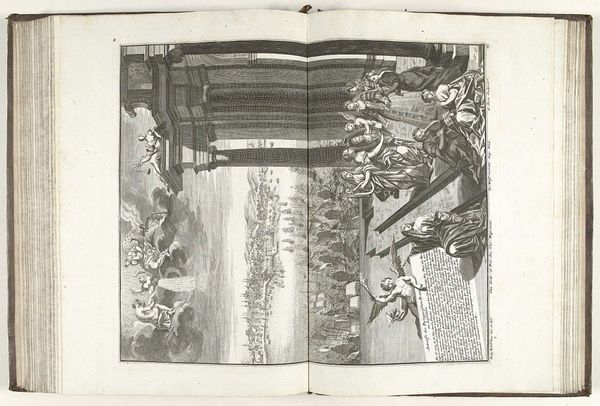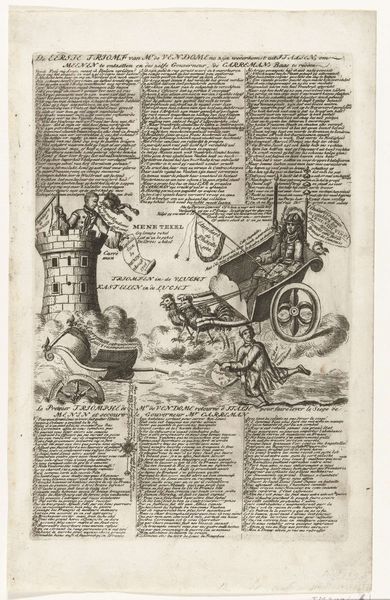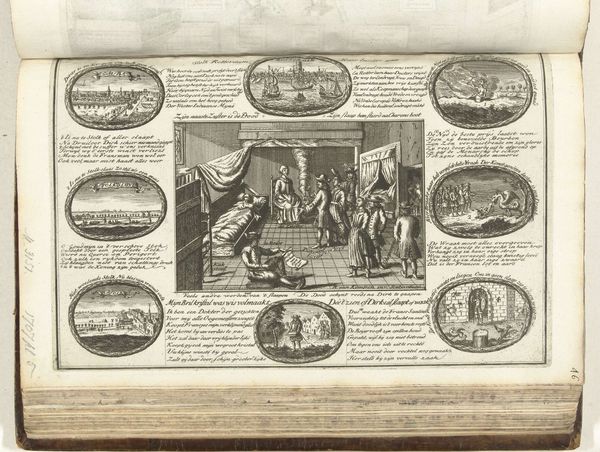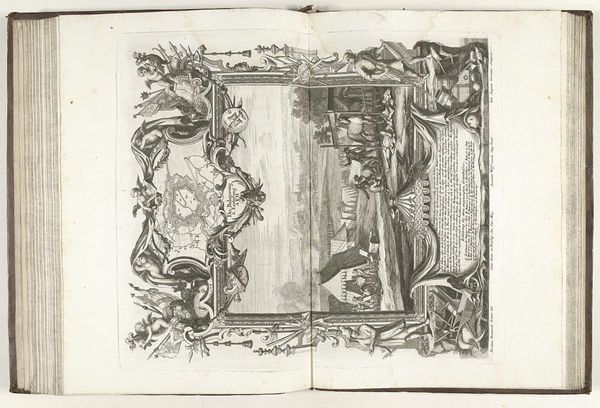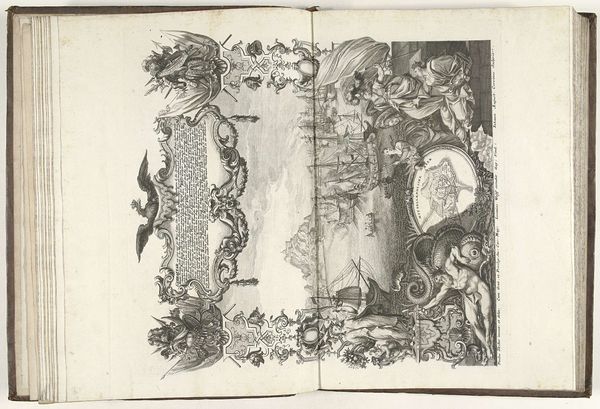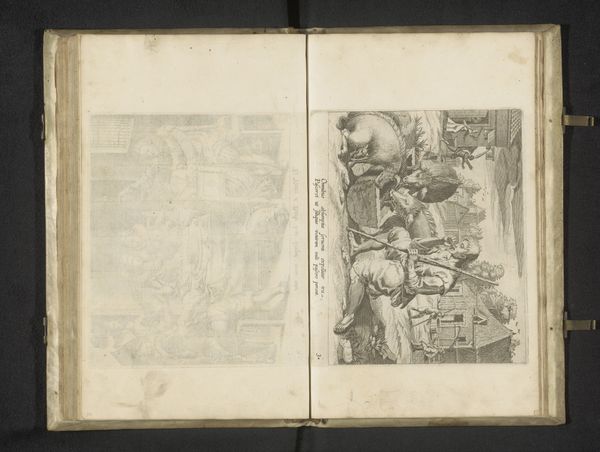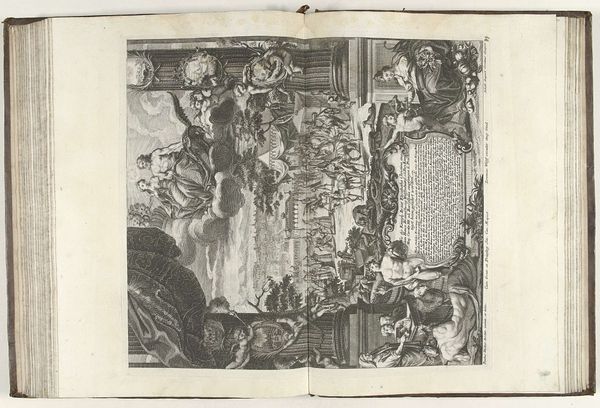
print, engraving
#
allegory
#
baroque
# print
#
cityscape
#
history-painting
#
engraving
Dimensions: height 315 mm, width 200 mm
Copyright: Rijks Museum: Open Domain
Editor: So this is “Jansenisten en monniken zeef,” an engraving by Carel Allard from around 1706, at the Rijksmuseum. It looks incredibly intricate! Almost like a political cartoon… what jumps out at you when you look at it? Curator: Immediately, the process of engraving itself demands attention. The artist meticulously carved lines into a metal plate, a labor-intensive process for mass production of images. Considering the print’s themes - religious and political conflict - the choice of printmaking highlights its potential as propaganda, disseminating specific ideologies through a readily reproducible medium. Notice how the labor-intensive process contrasts with what seems like the chaos of its symbolism; is the act of filtering an organized action? Editor: Filtering… You mean because of the sieve depicted? How do you connect that to material concerns? Curator: Exactly. Sifting often separated valuable material from waste, which could have been linked to broader economic activities shaping Dutch society at the time. Who held access to materials, tools, and knowledge? Consider how Allard utilizes allegorical language to represent groups as materials that must be evaluated, measured, even purged. The printing press provided a material space for producing opinions about a society facing constant social change. How was religion consumed, literally digested by believers during this period? What elements get filtered in this political narrative and how? Editor: That’s a really interesting point! I hadn’t considered the materials and printing process as integral to the message. Thinking about the consumption of imagery like this helps me contextualize this in Amsterdam’s history. Curator: Absolutely. Recognizing the materials and mode of distribution used can help us reconsider its audience in a society on the brink of momentous transitions. By exploring how ideas took a material form, our view of society comes into sharper focus.
Comments
No comments
Be the first to comment and join the conversation on the ultimate creative platform.
